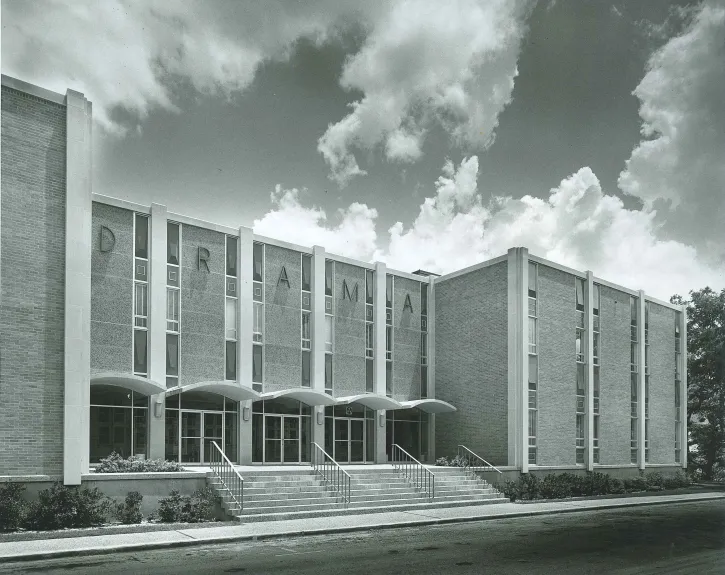The Department of Theatre and Dance is a world-class educational environment that services as the ultimate creative incubator for the next generation of artists, thinkers and leaders in theatre and performance.
Founded in 1938, the department was the first university theatre program in the state of Texas. Now, with 50 full-time faculty and staff, and 400 undergraduate and 70 graduate students, the department is one of the largest theatre and dance programs in the country. Our alumni are regularly featured on stage, television and film, and have been recognized with Academy Awards, Tony Awards, Emmy Awards and the Pulitzer Prize in Drama.
The department is accredited institutional member of the National Association of Schools of Dance (NASD):
11250 Roger Bacon Drive
Suite 21
Reston, Virginia 20190-5248
Telephone: (703)437-0700
The University of Texas at Austin is a member of the University/Resident Theatre Association (U/RTA).
History of the Department of Theatre and Dance
In 1908, English Professor Stark Young, who later became a drama critic of the New York Times, started the Curtain Club for “some form of dramatic expression at The University of Texas." The all-university, extra-curricular club grew in popularity and three decades later helped launch the Department of Drama in 1938.
The department, under the new chair James H. Parke, began with four instructors and nine courses. It was the first department devoted solely to theatre in any Texas college or university.
In 1939, E.P. Conkle began the playwriting program and James Moll, who arrived in 1941, created the first acting curriculum. B. Iden Payne joined the faculty in 1946 and established an annual Shakespearean production staged in modified Elizabethan style. Lucy Barton followed in 1948 to establish a degree in costume design.
F. Loren Winship served as chair to the department from 1948-1968. During those years, he led the department through tremendous challenges and achievements, including the construction of the drama building that today bears his name.
Under Winship’s leadership, the department inaugurated the master of fine arts degree in drama in 1948. Between 1949 and 1979, Francis Hodge brought the master of fine arts directing program to national recognition. Scene designer John Reese Rothgeb joined the faculty in 1958. In the 1960s and 1970s, David Nancarrow, Paul Reinhardt and Rothgeb continued the efforts of their predecessors in lighting, costume design and scene design, respectively. Coleman A. Jennings, a graduate of the department (and eventually its chair from 1980-1992), designed a program in creative drama and theatre for young audiences that has received national awards for its excellence.
In 1971, legendary ballet star Igor Youskevitch was hired to head the dance program, which Shirlee Dodge established in 1945. The dance program was further developed by Lathan Sanford, Leon Danielian, Yacov Sharir and Sharon Vasquez, who established the student group Dance Repertory Theatre in 1982.
To reflect the growth and stature of the dance program, the name of the department was changed to the Department of Theatre and Dance in 1991.
Programs for elementary and high school students have been part of the department since its inception. The department was the first Texas institution to offer a drama teacher training program. Originally created by F. Loren Winship in the 1940s, the program was revitalized by Ruth Denney in the 1970s. From 1961 until 1999, Lynn Murray directed the nationally known UT Summer Theatre Workshop for Texas' most outstanding high school drama students.
Dr. Oscar G. Brockett, the leading theatre historian in the United States, came to the university in 1978 to serve as Dean of the College of Fine Arts. After stepping down as dean in 1980, he joined the Department of Theatre and Dance and built the M.A./Ph.D. in Theatre History and Criticism into the top-ranked theatre doctoral program in the country. Jill Dolan came to the department in the fall of 1999 and further developed her unique approach to Theatre History and Criticism by incorporating an emphasis in "performance as public practice" within the program.


